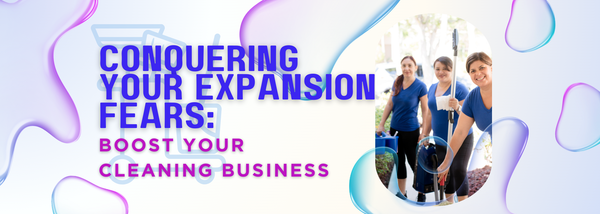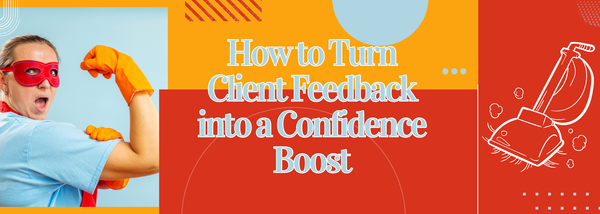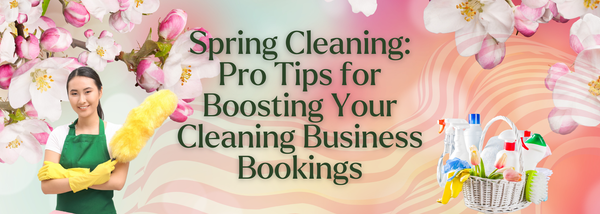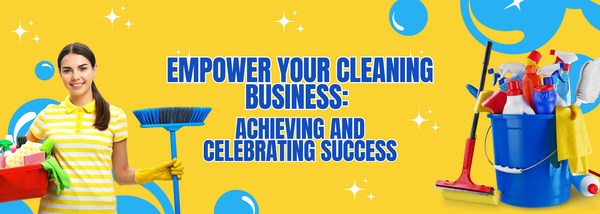Cleaning Homes with Pets: What You Need to Know
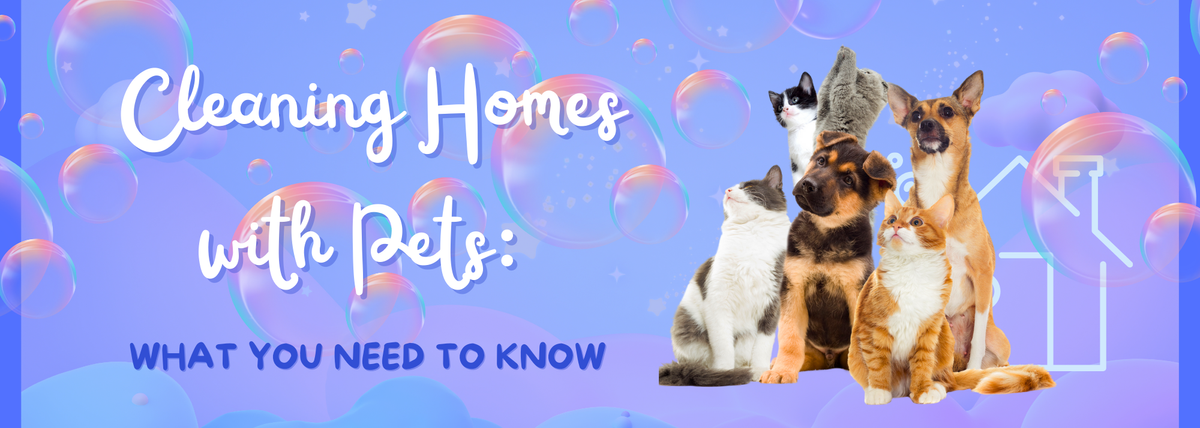
Cleaning homes with pets can be both rewarding and challenging. While pets bring joy to a household, they also come with unique cleaning needs that require specialized strategies. Whether you're cleaning a client’s home with dogs, cats, birds, or other pets, it’s essential to know how to handle pet-related messes. This article will guide residential cleaners on what to expect when cleaning homes with pets, how to manage pet hair and odours, and what tools and techniques will make the job easier.
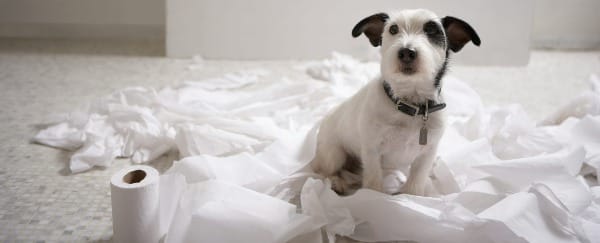
Challenges of Cleaning Homes with Pets
Homes with pets have a distinct set of cleaning challenges that you may not face in pet-free environments. Some of the most common challenges include:
- Pet Hair: Pets, particularly dogs and cats, shed hair constantly. This hair can become embedded in carpets, upholstery, and even hard surfaces, making it difficult to clean. It can also aggravate allergies, which is something to be mindful of while cleaning.
- Pet Odours: Pets can leave lingering smells in a home, especially if they’re not regularly bathed or if there’s a lot of indoor activity. Urine, feces, and even pet dander can contribute to these odours, which might require special products and techniques to neutralize.
- Pet Messes (Accidents, Vomit, and Dirt): Accidents happen, whether it’s an unexpected bathroom mishap, vomiting, or dirt tracked in from outdoor play. These messes require prompt attention and specific cleaning methods to avoid lingering stains or odours.
- Chewing and Scratching Damage: Pets, particularly dogs and cats, often chew on furniture, baseboards, and other surfaces. This damage might not always be immediately visible, but you’ll need to be prepared to work around these marks and clean the areas appropriately.
- Pet Allergies: Many clients with pets may suffer from allergies to pet dander. It's important to use hypoallergenic products and methods that don’t exacerbate these issues.

What You’ll Need to Clean Homes with Pets
To make your job as a cleaner easier and more effective, it’s important to have the right tools and products designed specifically for homes with pets. Here's a list of essential tools for the job:
- Vacuum with a HEPA Filter: A vacuum cleaner with a HEPA (High-Efficiency Particulate Air) filter is essential when cleaning homes with pets. HEPA vacuums trap pet hair, dander, and other allergens, preventing them from being released back into the air.
- Lint Rollers or Pet Hair Removal Tools: Lint rollers are an excellent quick fix for removing pet hair from furniture, clothing, and other surfaces. There are also specialized pet hair removal tools available, such as rubber pet hair brushes and mitts.
- Enzyme-Based Cleaners: For cleaning pet accidents, enzyme-based cleaners are the best option. They break down organic stains (like urine or vomit) and neutralize odours. Look for products that are pet-safe and eco-friendly.
- Microfiber Cloths: Microfiber cloths are ideal for cleaning surfaces as they trap dust, dander, and dirt. They’re also effective at wiping down pet-related messes, such as paw prints and wet spots.
- Odour Neutralizers: A good odour-neutralizing spray will help combat lingering smells. Choose one that’s pet-safe and free of harsh chemicals. Natural products like vinegar, baking soda, or essential oils can also do the trick.
- Air Purifier: While not a cleaning tool per se, an air purifier can help keep the air clean by filtering out pet dander and other allergens. Many clients with pets will have one already in place, but it’s always worth mentioning if they don’t.
- Rubber Gloves: Rubber gloves not only help protect your hands but also make it easier to gather and remove pet hair from upholstery and carpets. They can also help you clean more thoroughly by preventing direct contact with allergens.
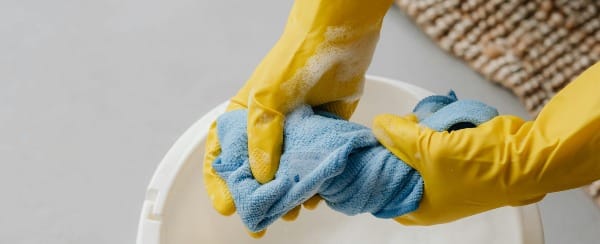
Best Practices for Cleaning Homes with Pets
Here are some best practices to ensure that your cleaning routine is both effective and efficient when working in pet-friendly homes:
- Start with a Pre-Clean Assessment: Before you begin cleaning, take a moment to assess the home. Ask the client about any specific pet-related issues they may want to address, such as allergies, frequent accidents, or areas that require extra attention. This will give you a better idea of the best approach for each job.
- Tackle Pet Hair First: Pet hair should be your top priority, especially if there’s a lot of it. Start by vacuuming all floors and upholstered surfaces, and be sure to focus on high-traffic areas where pets often lie or sit. Use lint rollers and pet hair removal tools on furniture and drapes. If pet hair is stubborn or embedded in carpets, consider using a specialized pet hair removal vacuum attachment.
- Deal with Pet Odours Early: Pet odours can become more pungent over time, so it’s essential to neutralize them as soon as you start cleaning. Use enzyme-based cleaners to treat spots where pets may have had accidents. For general odours, try using natural odour-neutralizing products like baking soda, vinegar, or activated charcoal in places like litter boxes or pet bedding.
- Treat Stains and Messes with Enzyme Cleaners: If you come across pet accidents or messes, reach for an enzyme-based cleaner. These products will help break down the organic compounds in pet waste and eliminate the smell. It’s important to apply the cleaner as soon as possible to prevent stains from setting in.
- Clean Pet Bedding and Toys: Pet bedding, cushions, and toys should be cleaned regularly. Launder any washable pet bedding, using a gentle detergent. For toys, wipe them down with a disinfectant that’s safe for pets. Be sure to clean pet food and water bowls as well, as they can accumulate bacteria and pet hair.
- Clean Hard-to-Reach Areas: Pets often like to hide in hard-to-reach areas such as under furniture or in corners. Use a long, flexible duster or vacuum attachment to clean these spaces. It’s also a good idea to clean behind and underneath furniture, as pet hair and dirt often accumulate there.
- Use Pet-Safe Cleaning Products: When cleaning homes with pets, it’s important to use non-toxic and pet-safe cleaning products. Avoid harsh chemicals like bleach or ammonia, which can be harmful to pets if they come in contact with them. Opt for natural or biodegradable cleaners whenever possible.
- Ensure Thorough Ventilation: Open windows, use fans, or turn on air purifiers to improve ventilation when cleaning homes with pets. This will help reduce the accumulation of allergens like dander and give the home a fresh, clean atmosphere.

Tips for Clients Who Own Pets
Educating your clients about maintaining a cleaner, healthier home for their pets can also help you in the long run. Consider offering these helpful tips to your clients:
- Groom Pets Regularly: Regular grooming, such as brushing and bathing, can help reduce the amount of pet hair and dander in the home.
- Use Washable Pet Bedding: Encourage clients to use washable pet bedding and toys to minimize odours and maintain cleanliness.
- Create a Cleaning Schedule: Recommend a regular cleaning schedule to help keep pet hair, odours, and messes under control.

As a final thought, cleaning homes with pets can present unique challenges, but with the right tools, techniques, and cleaning products, it’s entirely manageable. By focusing on pet hair removal, odour control, and using pet-safe cleaners, you can ensure that both pets and their owners enjoy a clean, healthy environment. By following the tips outlined above, you can improve your efficiency and provide excellent service to clients with pets, helping them maintain a home that’s both clean and pet-friendly.

